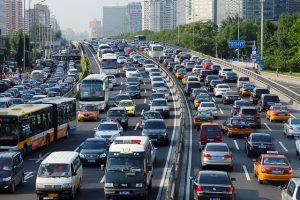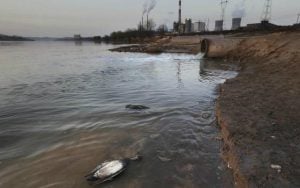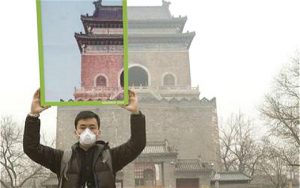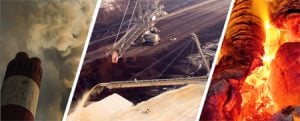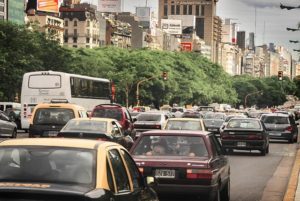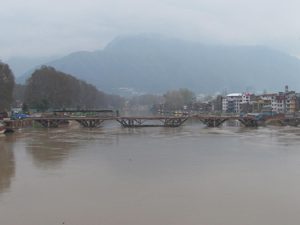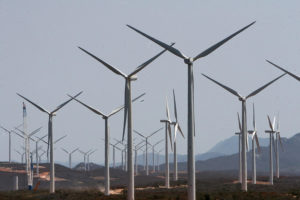Hangzhou, widely considered to be China’s most attractive city and largely free of heavy industry, earned the dubious honour of being the first Chinese city to register over 200 days of smog in a single calendar year. But the statistic, which was given prominence in the recent, wildly successful documentary ‘Under the Dome’, perhaps misrepresents the scale of the problem in a city where cars, rather than power plants and factories, are the main cause of pollution.
For a city whose reputation is one of almost unparalleled natural beauty and cultural prestige, the ‘200+’ statistic – as well as the image of the West Lake choked in smog – has prompted strong debate in the eastern coastal city, which is home to around 4 million people. While many locals bemoaned what they saw as evidence of the region’s pollution problems ruining China’s most gorgeous city, others were quick to question the whether the data was a fair representation.
Hangzhou is certainly polluted, but the numbers didn’t seem to tally with residents’ first-hand experience of the city’s air quality.
A closer look at the figures actually backs up this assumption. The startling statistic espoused in the recent documentary refers to 2013, during which Hangzhou registered 239 days of smog pollution by the end of November. Combined with that image of the West Lake, taken at the height of that year’s ‘airpocalypse’, ‘Under the Dome’ represents Hangzhou’s smog at its most extreme – a stark example that is somewhat out of kilter compared with average daily pollution levels.
The year 2013 stands as an anomaly among the smog levels of recent years. According to official figures, in 2014 Hangzhou experienced 154 days of smog pollution – 85 days fewer than in 2013, and much more consistent with longer-term trends. In 2011 and 2012 for example, the figures were 157 and 159 days respectively.
A comparison of the 2013 and 2014 statistics also shows a general trend towards improved air quality. In 2013, ambient levels of PM2.5, one of the most harmful types of pollution, averaged twice the national standard. Last year saw ambient levels of PM2.5 fall by 7.7%, while the city chalked up 230 days where the air quality was ‘good’ according to national standards – 13 days more than 2013.
Hangzhou does suffer from airborne pollution for well over half the year, but heavy pollution of the kind seen in China’s traditional industrial cities is still a rather rare occurrence. The light haze visible most days in downtown Hangzhou betrays the major source of the city’s smog problem – vehicle exhaust fumes.
An analysis of the composition of the city’s air reveals that over 40% of atmospheric PM2.5 stems from vehicle emissions, a share that reflects residents’ rising average incomes, which have increased fourfold in fifteen years.
This has created a burgeoning middle class and given rise to a corresponding increase in private car ownership. There is now roughly one car for every two people in Hangzhou, a trend that has made it China’s second most congested city despite its absence from the top ten most populous urban areas.
The municipal government has reacted by designing a city-wide metro system and connecting rapidly developing suburbs with fast-track public buses to the centre, but so far little headway has been made in easing Hangzhou’s traffic problem.
Low-quality fuel
Hangzhou’s ‘middle-class smog’ is exacerbated by a scarcity of high-quality fuels on a national level, an issue raised by ‘Under the Dome’. Since January, all new vehicles nationwide have been expected to comply with National Standard IV fuels, a criterion that theoretically guarantees seven times fewer sulphur emissions than the previous standard for diesel and three times less for gasoline. However, Standard IV only represents 3% of the total number of fuels currently sold in China. Hangzhou can probably afford the upgrade to better quality fuel, but availability is severely lacking, meaning cars continue to run on low-grade, high-emissions fuels.
While vehicle emissions are a disproportionate cause of Hangzhou’s PM2.5, the city is still no stranger to two of the traditional drivers of China’s urban pollution, fuel burning and construction. The former accounts for a third of all atmospheric PM2.5 in the city, while dust thrown up from building sites comprises a further 8%.
Away from the city’s historic centre, vast new industrial parks have been built. Since 2001, the nearby Xiaoshan and Lin’an Economic Zones have been promoted as part of the Zhejiang Provincial Government’s ‘Three-Hour Transportation, Economic, and Life Circle’ linking the region’s major cities up with Shanghai.
These economic zones have diversified Hangzhou’s industrial base, but have increased emissions and present environment officials with a challenge. In a city with a huge stake in the tourism sector, how do you spur industry forward without the smog spoiling the scenery?
New controls
A commitment to tackling the smog problem formed part of Mayor Zhang Hongming’s ten-point plan in his work report given last month. His speech targeted the elimination of ‘yellow-label cars’, referring to those which do not meet minimum emissions standards. He also announced the roll-out of 2,500 new energy public transport vehicles, and stated a goal tighten control over dust pollution on construction sites.
The measures build on the ‘Hangzhou Heavy Environmental Pollution Emergency Plan’, released in the wake of the 2013 smog. The plan sets out a tiered system for providing increased public transport in case of heavy smog pollution, and outlines a cross-departmental approach for raising awareness of the causes of smog in the educational, construction, and public transport sectors.
The plan will hopefully ensure Hangzhou’s pollution does not return to the levels seen in ‘Under the Dome’, but the city still suffers from the shortcomings of nationally-implemented fuel regulations and transport infrastructure that has not kept pace with increased prosperity.
Until viable means of easing congestion and reducing reliance on low-grade fuels can be found, tourists should expect to glimpse the West Lake through the haze.
